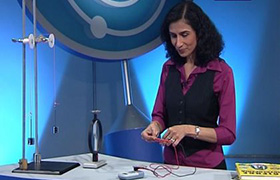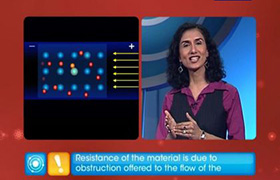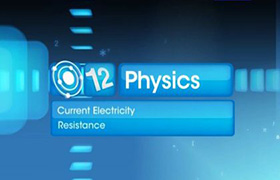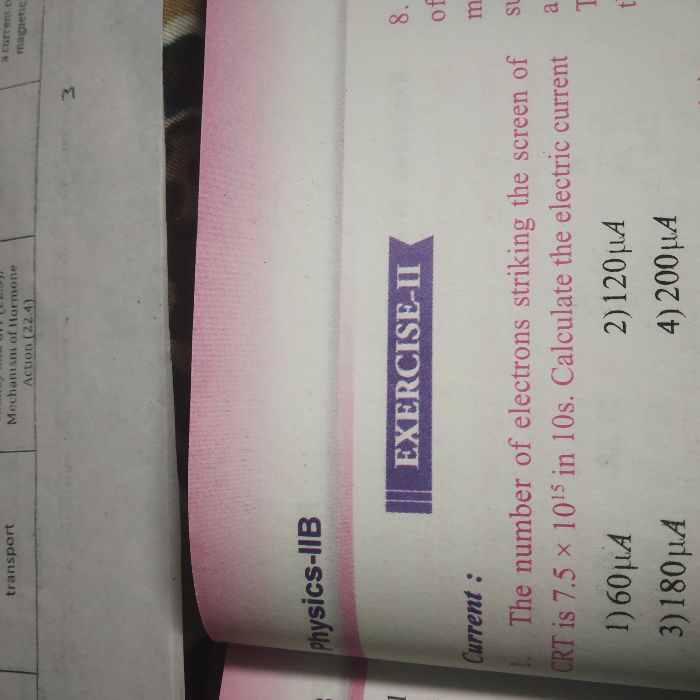CBSE Class 12-science Answered
A semiconductor slab of thickness t=0.5 mm with length l=30 cm carrying current I=2A placed in a magnetic field B=0.25T directed into the page, perpendicular to the flat surface of the slab carries 7*10^24 electrons per m^3. Calculate the Hall voltage across the slab. Indicate which edge (top or bottom) is at higher potential and why?
Asked by arjunsah797 | 26 Jan, 2022, 14:56: PM
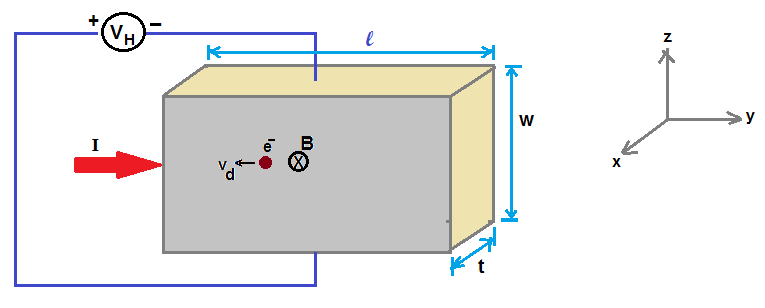
Figure shows a semiconductor slab of length l , width w and thickness t .
Let us assume cartesian coordinate system so that length of slab is along y-direction and width is along z-direction as shown in figure.
Let Current I is passing through the semiconductor slab along y-direction .
Let magnetic field B is directed into the page, i.e. along -x-axis direction.
Since current is passing along y-axis direction, drift velocity vd of electron is along -y-axis direction as shown in figure.
Force acting on electron F = -e ( vd × B )
where e is magnitude of charge on electron
Direction of force is along z-direction . Hence electrons accumulate at top of slab and gives -ve potential ,
while bottom of slab gets +ve potential as shown in figure.
Hall voltage, VH = ( vd × B × w ) ...............................(1)
Current and drift velocity are related as, I = ne × e × vd × A ............................(2)
where ne is electron density and A = ( w × t ) is area of cross section
Substituting vd from eqn.(2) , we get Hall voltage from eqn.(1) as


Answered by Thiyagarajan K | 26 Jan, 2022, 20:15: PM
Concept Videos
CBSE 12-science - Physics
Asked by shivashikhar69 | 09 Dec, 2023, 14:27: PM
CBSE 12-science - Physics
Asked by deepajinder | 05 May, 2022, 20:33: PM
CBSE 12-science - Physics
Asked by saishankar160 | 10 Feb, 2022, 21:57: PM
CBSE 12-science - Physics
Asked by arjunsah797 | 26 Jan, 2022, 14:56: PM
CBSE 12-science - Physics
Asked by nonuhasan2 | 23 Nov, 2021, 14:18: PM
CBSE 12-science - Physics
Asked by pappuchandra017 | 16 Feb, 2021, 03:56: AM
CBSE 12-science - Physics
Asked by krunalgoti2004 | 10 Aug, 2020, 12:21: PM
CBSE 12-science - Physics
Asked by broprint18 | 05 Jun, 2020, 09:45: AM
CBSE 12-science - Physics
Asked by kumarisweta10012004 | 10 Oct, 2019, 12:31: PM
CBSE 12-science - Physics
Asked by Harimahi73 | 21 Feb, 2019, 20:53: PM

